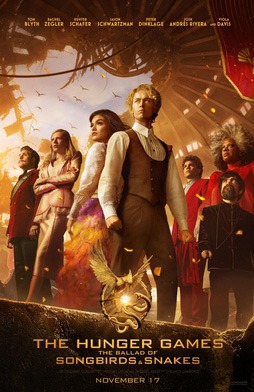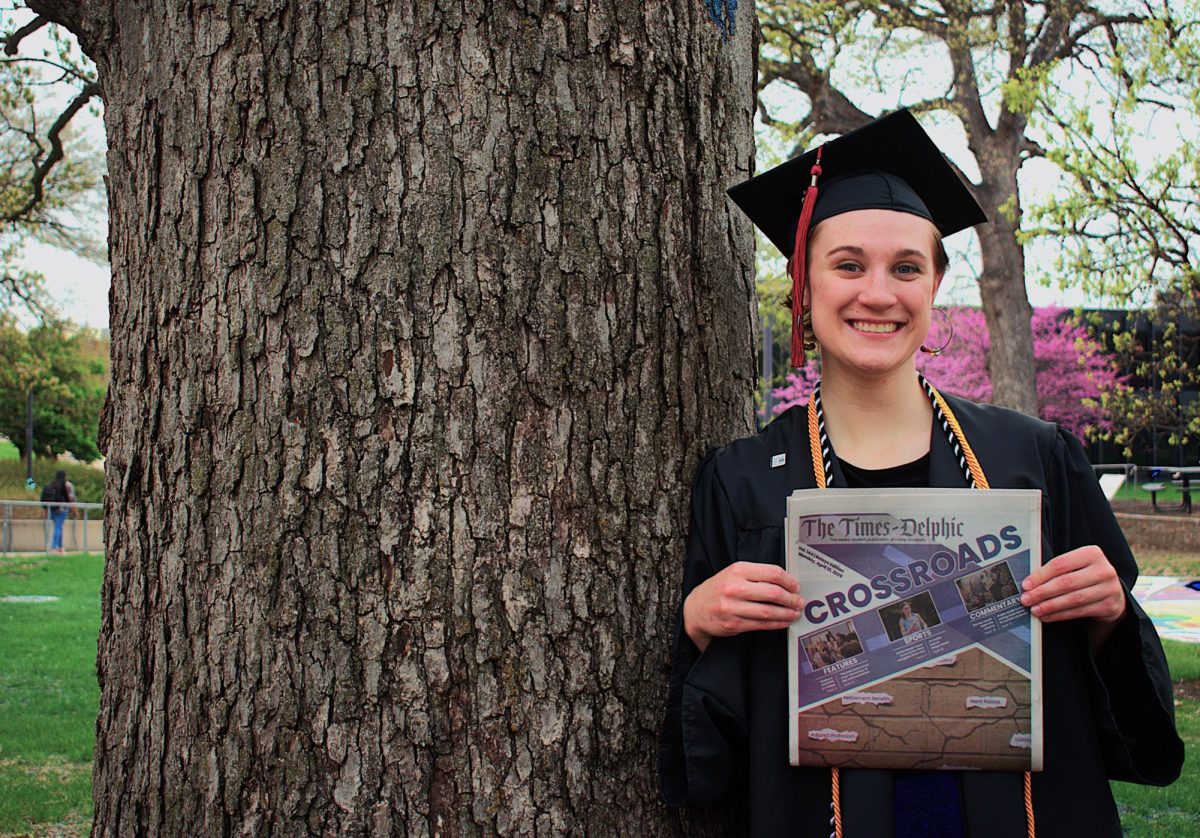“The Hunger Games: The Ballad of Songbirds and Snakes” is the prequel to the 2012 “The Hunger Games,” set close to 70 years before the latter. It is an adaptation of the 2020 novel by Suzanne Collins of the same name and the fifth installment in “The Hunger Games” universe.
The film follows a young Coriolanus Snow (Tom Blyth) and his rise to power as the president of the dystopian Panem and is set during the 10th annual Hunger Games. It also chronicles his relationship as a mentor with his tribute Lucy Gray Baird (Rachel Zegler), a member of the nomadic Covey from the 12th district. The film is directed by Francis Lawrence, who previously directed “Catching Fire” and “Mockingjay Part I and 2” from the original series.
Lawrence creates a spectacle of film that is incredibly ambitious. Jo Willems, the cinematographer, makes every frame beautiful with incredible lighting, while the production design team hits it out of the park with every set. Trish Summerville’s costumes are absolutely gorgeous and enhance every frame.
The cast delivers fantastic performances — Blyth steals the show with a complex and layered performance, while Zegler’s dynamic screen presence and beautiful voice brings the mystery of Lucy Gray to life. The actors also share great chemistry, which really helps the audience invest in their relationship — even if it’s underwritten.
The supporting cast is excellent too — Josh Andres Rivera does a great job as Sejanus Plinth and Viola Davis is ridiculously scary as the evil gamemaker. Peter Dinklage plays a man drowning in regret with great sincerity while Jason Schwarztman plays a hilariously morbid Lucretius “Lucky” Flickerman with great ease.
The screenplay and the runtime, however, let this film down quite a bit. The film is 157 minutes long and you feel every minute — particularly the third act when the audience should ideally be the most engaged. The screenplay feels scattered and unplanned — unsure of what it’s trying to say at times.
The narrative isn’t particularly tight either and is splashed with some confusing politics that are in conflict with the original films. It almost feels like the movie should have been over after the Hunger Games ended because of the oddly climactic way the sequence is presented, even though there is still close to 40 minutes of the film left. The third act feels rushed and botched up in parts, with the scenes not getting enough time to breathe as if the producers were yelling at the director to wrap it up quickly.
This is not necessarily a narrative issue — there is simply too much content for one cohesive film. It might have fared better being divided into two movies — pre-game and post-game, at the risk of inviting the wrath of the fans claiming it to be a cash grab.
This causes another problem — the lead pair’s romantic relationship feels underdeveloped and certain scenes feel unearned, which leads the audience to be a bit detached from any obstacles they face. This is a recurring issue with other characters in the film, too — Sejanus’s storyline doesn’t seem genuine, with some of his actions feeling like they only happened because they were convenient to the plot and not because the character was organically motivated to do those things.
Several of the conflicts resolve a little too easily for Snow in the first act, particularly in the Hunger Games scenes. All of this is because the story has too much content and not enough time to properly set up certain relationships and sequences, so the viewer feels the emotional impact in the third act. This makes several sequences feel surface level.
Both the book and the movie are almost exclusively told from Snow’s point of view, which works for the book quite well because of his internal monologue. However, for the film, the viewer has to make a lot of assumptions and keep a close eye on how Snow reacts to everything. Otherwise, one’s at risk for missing out on subtly played character dynamics.
It is a combination of him simply being a bad person and the horrible circumstances he goes through that create the monstrous leader of Panem the audience is familiar with. Although this distinction isn’t so clear in the film, he still has an interesting character arc as his fake humanity fades away as the film progresses, but it seems to give those terrible circumstances more weight than the book does.
It’s not nearly as bad as “Cruella” (2021) or “Maleficent” (2014) in terms of justifying a horrible character as a victim of their circumstances, the film makes it clear that this is a case of a horrible person making consciously horrific decisions while also seemingly giving those circumstances more weight than the book does, thereby making certain early actions seem abrupt.
Overall, the film is still enjoyable, probably more for those who have read the book and are familiar with the intricacies of the characters’ relationships already and are ready for the pace of the narrative. Despite its flaws, “The Ballad of Songbirds and Snakes” is a solid one-time watch for casual viewers and a rather entertaining film for fans of the universe.







